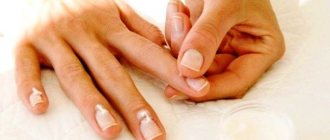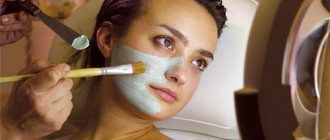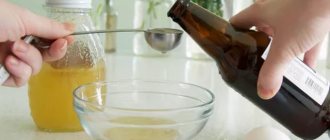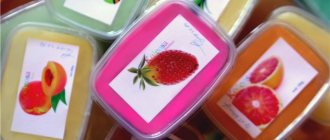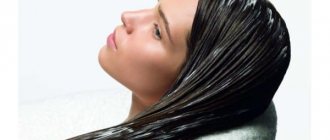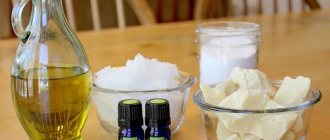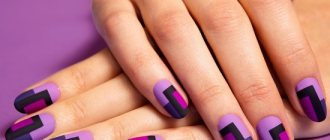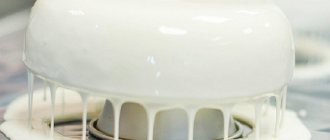Due to exposure to an aggressive environment and daily wear and tear, without proper care, even strong nails eventually become weak, brittle and peeling. Homemade baths to strengthen nails are a simple and affordable way to care for the nail plate and cuticle. Depending on the composition, such baths can not only strengthen, but also solve other nail problems.
How to make nail baths
Homemade nail baths are a full-fledged spa procedure that is easy and simple to do yourself. However, it is important to take into account some nuances and follow the correct procedure. Before immersing your fingertips in the bath, you need to clean the nail plate of any type of coating. Even if there is a medicinal colorless varnish on the nails, it should be removed. Afterwards, rinse your hands with warm water and soap or hand gel. It wouldn’t hurt to get a hygienic manicure and file overgrown nails.
Stores sell special containers for nail baths. If you do not have such a bath, then the procedure can be carried out in a wide and shallow bowl. The main thing is that you can pour a sufficient amount of liquid into it, and then freely plunge your hand into it without spilling anything and arrange your wrist in a comfortable way. Place a terry towel under the bowl, which will prevent the bath from sliding on the surface and you won’t have to worry about drops when you remove your hands from the liquid.
Soak your fingertips in the bath for about 10-15 minutes, then remove your hands, rinse with running water if necessary, and blot your hands with a soft, absorbent cloth. Apply moisturizing cream or nourishing vegetable oil (olive, grape seed, jojoba oil, etc.) using massage movements.
Homemade nail baths are done at least once or twice a week. If the nails are seriously damaged, the procedures are carried out in courses - every other day for 15-20 days, alternating them with oil masks.
Rules for the procedure
To achieve the expected result from the procedures, it is recommended to follow some rules.
• Before the bath, you should prepare your hands. To do this, the decorative coating is removed from the nails and the skin is thoroughly washed using soap or gel. The stage ends with passing a soft file over the plates.
• When deciding on a bath recipe, you should clarify what problem the composition helps solve. In addition, it is important to carefully study the ingredients of the product to prevent allergies.
• To carry out the procedures, it is worth choosing a convenient container. Its height should be within 10-20 cm, its diameter should be no less than the length of the palm. Of the materials used to make the bowl, it is better to give preference to plastic; it retains heat longer. Ideally, purchase a professional bath equipped with a thermostat and heating element.
• The duration of the procedure is determined by the condition of the skin, or rather the degree of its sensitivity (from 5 to 30 minutes). The more sensitive the skin, the less time it will take to treat your fingers.
• The bath liquid should be well warm, but not exceed 45 degrees. It is the temperature range of 35-45 degrees that ensures the safety of all vitamins and microelements contained in the components used.
More photos and publications: Shatush and balayage: comparing techniques and choosing the best option
• After the procedure, hands should be dried with a napkin and thoroughly massaged with a cream with a moisturizing effect.
Baths for strengthening nails at home
Homemade baths for strengthening nails can have different compositions. The nail plate mostly consists of keratin, a fibrillar protein that is also a building block for hair. It is keratin that is responsible for the strength of the nail. The elasticity and shine of the nail plates is given by layers of water and fat-like substances. A healthy nail also contains:
- sulfur;
- zinc;
- chromium;
- phosphorus;
- calcium;
- manganese;
- iron;
- selenium.
When choosing ingredients for a nail bath, give preference to those that are rich in the listed beneficial substances, nourish and moisturize the nail, and saturate it with protein. The base of the bath does not have to be water. This could be milk, whey, vegetable oil, fruit or vegetable juice, and even beer. Essential oils are added to the bath not only for aroma. They act as whitening, antifungal, antiseptic agents, accelerate nail growth and are useful in the fight against brittleness and delamination of the nail plate.
Most often, nails peel from a lack of sulfur or due to poor hydration, explains Irina Kulalaeva, a teacher at the Moscow Academy of Nail Art, an international class master. Choosing the right hand care products will help solve this problem.
A little history
Hot manicure is very popular nowadays, but it originates from antiquity. Cleopatra herself made hot baths for her hands, adding natural oils and ingredients to the water. In the 16th and 17th centuries, French queens took baths in heated oils, resulting in soft and velvety skin. In the legends about the Greek Gods, there are references to the beautiful hands of the goddess Aphrodite, as well as how she loved to keep her hands in hot rose oil.
Today, hot manicure is very popular and is considered the most elite type of manicure compared to others.
Salt baths for nails
Sea salt is good for brittle, flaky nails. Salt adds shine to the nail plate, strengthens it, promotes hydration and protects against harmful UV radiation. Sea salt owes these properties to its composition, which includes useful minerals - iodine, sodium, magnesium, potassium.
For a sea nail bath, only natural sea salt is suitable, without additives or dyes. You will need one tablespoon of salt for every 200 ml of water. You can add 2-3 drops of lemon or grapefruit essential oil into the saline solution. These oils whiten the nail plate and give it extra shine.
Dissolve the salt in warm water, the temperature of which is not higher than 40°C. If desired, you can add essential oil. Dip your fingertips into the bath and hold for 20 minutes. Rinse with warm water, pat dry with a soft cloth or paper kitchen towel and rub in moisturizing hand cream.
Salt baths for nails can only be done if there are no cracks in the skin of the hands and the cuticle is not injured. Otherwise, choose a different composition.
Preparation for hot manicure
For the hot manicure procedure, you cannot use any lotion; here you need a preparation with a special composition:
- Oil (most often olive) – helps soften the skin, has regenerating properties, eliminates any dryness and flaking;
- Vitamin E – promotes wound healing, helps restore nails after nail extensions. Vitamin of youth and beauty, allows you to keep your hand skin in perfect condition;
- Panthenol – healing and cooling properties. Panthenol is also an excellent moisturizer;
- Herbs – a variety of herbs that have soothing, antiseptic and emollient properties;
- Minerals.
This is one of the most popular recipes for preparing a special drug. In general, various ingredients are used as the main component: oil, glycerin, furatsilin solution, melted wax, lanolin.
Another good lotion recipe for hot manicure:
- Olive oil;
- Glycerol;
- Vitamin A and E;
- Essential oil.
Recipes for lotions for hot manicure are not chosen by chance. The ingredients are selected in such a way that when heated to 40-50 degrees, they are only beneficial and do not harm the skin. It is not necessary to prepare the lotion yourself; ready-made lotion can be purchased at a beauty salon or pharmacy. It is strictly forbidden to overheat the lotion; not only do the substances included in the composition lose their properties when overheated, but if the product is too hot, it can harm the skin of your hands.
Hot manicure is recommended during cold periods, since it is in autumn and winter that the skin of the hands is exposed to various influences. The separation of the nail plate is caused by weather changes, as well as a lack of vitamins. Hot manicure has a good effect on injured cuticles.
If you perform a hot manicure once a week, the results will not be long in coming. Many clients feel improvements in the condition of the skin of their hands and nails after the first procedure. The cuticle grows more slowly, small wrinkles and cracks disappear, the nails stop flaking and become less brittle.
Nail baths with oils
Vegetable oils are one of the best means for strengthening nails. They contain saturated fatty acids that moisturize the nail plate, as well as a number of vitamins and minerals. Almond, olive, linseed, castor oil, wheat germ oil and even ordinary sunflower oil are suitable for preparing baths. In addition to omega-3 acids, these oils contain vitamin B7 (biotin), which is involved in the synthesis of keratin, and vitamins E and A, which promote the growth, strengthening and healthy shine of nails.
If you slightly heat the oils, they will penetrate inside the nail plate more easily, since the heat causes the keratin scales not to fit so tightly to each other. The nourishing oil solution is also useful for dry cuticles. To whiten the nail plate, add lemon juice to oil baths for nails.
Take one tablespoon of freshly squeezed lemon juice for every three tablespoons of vegetable oil, heat the mixture in a water bath to body temperature and dip your fingertips in it for 15-20 minutes. Lightly pat your hands dry with a paper kitchen towel and rub the remaining oil into the nails and cuticles using light massage movements.
Contraindications
Hot manicure has virtually no contraindications. It is suitable for both adults and children. However, you should not resort to hot manicure if you have a fungal disease, open wounds or irritations, or tumors. It is best for people who suffer from diabetes to consult a doctor before undergoing such a procedure.
The advantages of hot manicure are countless, and as for the disadvantages, the price of the procedure comes first. Hot manicure is the most expensive way to care for nails and hand skin; its price, depending on the region, is 1500 - 5000 rubles.
A hot manicure is a unique procedure that is worth the time and money spent on it. Those who do not have the opportunity to visit expensive beauty salons can independently prepare unique baths with the desired effect and enjoy this type of manicure at home.
Nail baths at home: using herbs
Among folk recipes for strengthening, moisturizing and treating peeling nails, one often comes across advice to prepare a bath of herbal decoctions. To soften dry cuticles, moisturize the nail plate, and stimulate nail growth, infusions of mint, chamomile, sage, green tea, and linden inflorescences are suitable. For strengthening, decoctions of plants containing silicas and tannins, such as yarrow, nettle, and oak bark, are suitable.
To prepare a herbal bath for nails, pour boiling water over the dried herbs in a ratio of 1:10, cover with a lid and leave to steep for 30-60 minutes. Strain the finished infusion and warm it slightly. You can also add various oils, vegetable or fruit juice, and milk to it. Try making strengthening nail baths using the following ingredients:
- 1/3 cup olive oil;
- 1 glass of infusion of chamomile and mint;
- 3 drops tea tree essential oil.
Heat olive oil in a water bath, add warm herbal infusion to it and drip essential oil. Stir and dip your fingertips into the prepared bath. Keep them there for at least 15 minutes. In addition to its strengthening and moisturizing effect, this procedure has another bonus - it will help fight nail fungus.
